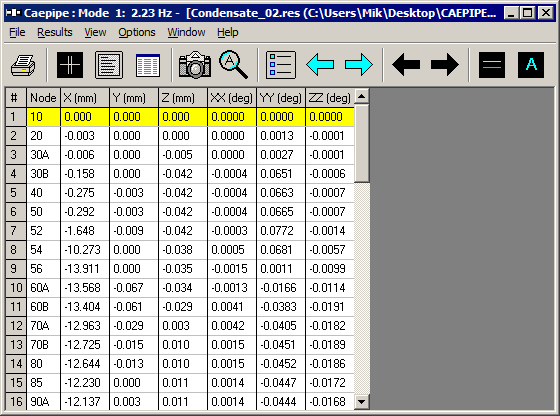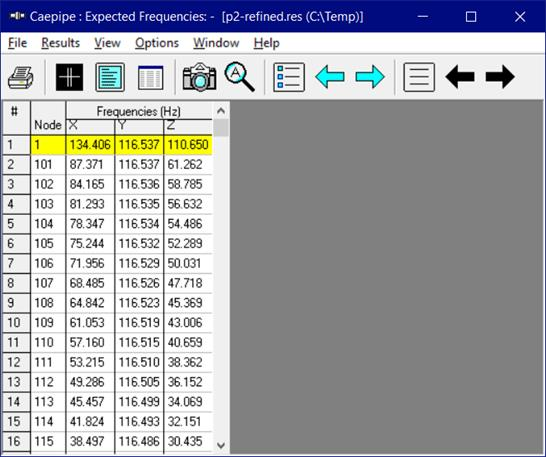Frequencies
A list of natural frequencies, periods, modal participation factors and modal mass fractions is shown next.

The participation factor represents the percentage of the system mass that participates in a particular mode in a particular Global direction. It provides a measure of the energy contained within each mode for that Global direction. A mode with a large participation factor is usually a significant contributor to the dynamic response of a system. So, if the participation factor of a mode is close to 0, then no energy will get into that mode and that mode will not have much participation in the dynamic response.
Modal mass is defined as the part of the total mass participating in each mode and in each Global direction. Sum of the Modal masses in each Global direction for the modes computed is given at the last row of the frequency results. This sum will be useful to verify that all the significant modes of vibration are included in the dynamic analysis by comparing the total modal mass with the total actual mass for each Global direction.
Please note that in a frequency analysis, in the display/plot the mode shapes, the magnitude of the deformation is meaningless as it is only the shape of the mode that tells us how the system will vibrate.
You can show each frequency’s mode shape graphically or animate it by clicking on Show mode shape or Show animated mode shape button in the toolbar.
Each frequency’s mode shape detail is shown in the next window. As in the earlier window, you can show graphically the mode shape or animate it by clicking on the appropriate button.

When Random Vibration Analysis is turned ON for NONE code, CAEPIPE will show “Expected Frequencies” for different Random Vibration load cases such as PSDX, PSDY and PSDZ. Shown below are the “Expected Frequencies” results for PSDX load case.
